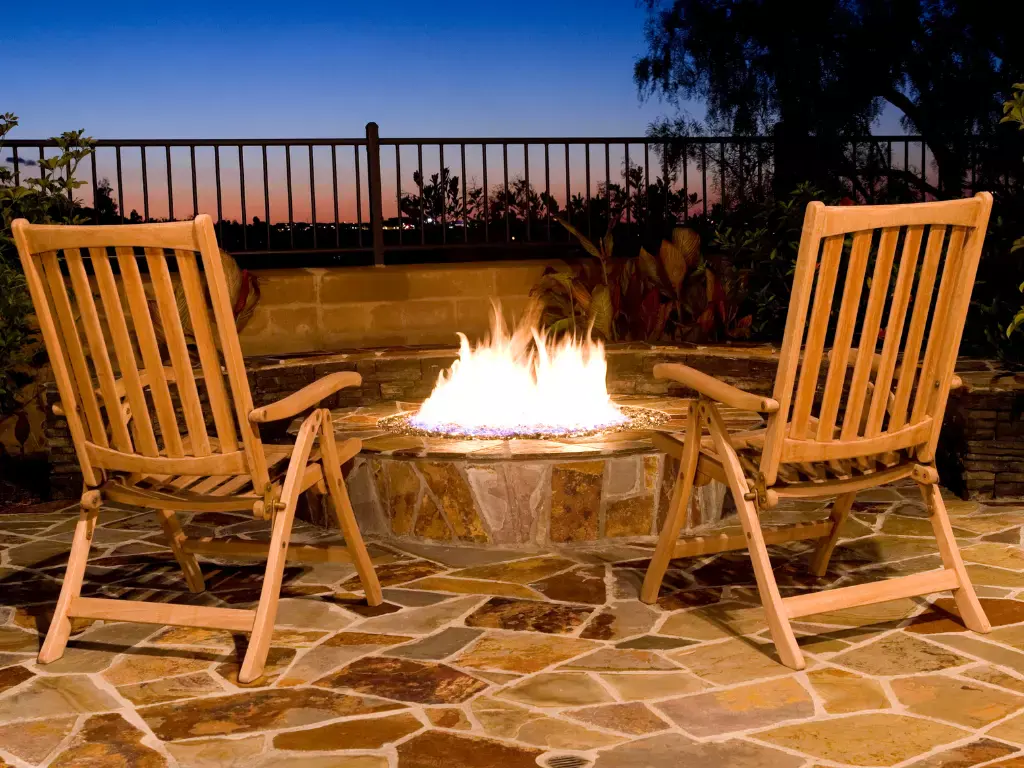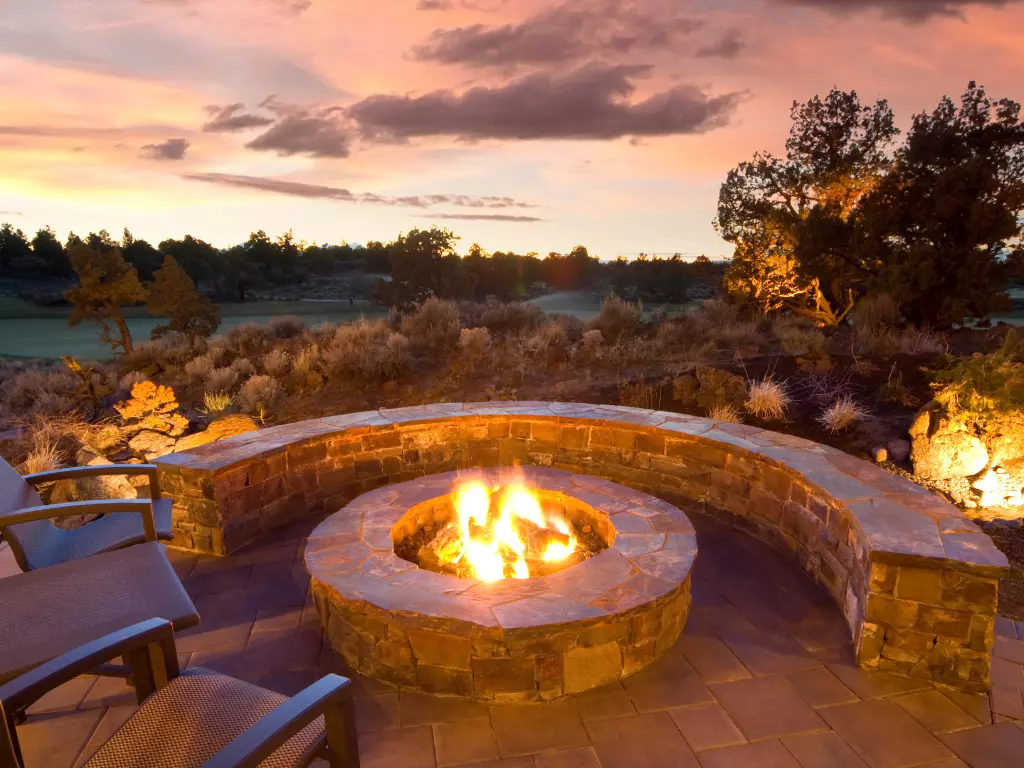Growing up, my family had so many fun memories gathered around the crackling campfire in the backyard on warm summer evenings. As the kids got older though, keeping that firewood chopped and hauled started to feel like a real chore.
Not to mention all the billowing smoke that would waft into the house if the wind shifted. It really put a damper on relaxing outside after a long day. Between the effort involved and the messy cleanup, our fire pit got used less and less.
Then I started hearing about these new “smokeless” fire pit models that were a thing. At first, I was skeptical – how could you have fire without smoke? But the more I read about their innovative venting systems and cleaner fuels, the more intrigued I became.
I decided it was worth a shot to swap out our old pit and see this smokeless combustion in action. Ah! am I glad we made the switch? Now we can easily enjoy cozy nights under the stars without any of the hassle.
In this guide, I’ll break down how does a smokeless fire pit work differently than wood-burning ones, the fuel options, benefits compared to a traditional pit, and safety tips. By understanding their design, you’ll be able to fully take advantage of relaxing by the flames without the nuisance of smoke.
What is a Smokeless Fire Pit?
At its core, a smokeless fire pit is essentially an elevated gas fireplace relocated outdoors. Rather than burning wood or other solid fuel sources, it utilizes specialized ventilation and strategically mixed fuels to achieve clean, smoke-free flames.
Key components of a Smokeless Firepit

Let’s dive into the key components that make this possible.
- A stainless steel or ceramic gas burner that emits the flame from either a linear or “H” shaped design. High-quality construction ensures durability.
- Decorative media like tempered glass or lava rock surrounding the burner to amplify and disperse the flame visually.
- An outer housing of powder-coated steel, concrete or other non-flammable materials to contain heat safely.
- Air inlets around the base and lower interior chamber that allow oxygen intake critical for combustion.
- A double-walled construction design with ventilated interstitial space between walls.
- Exhaust chimneys or vents at the peak to evacuate emissions upwards and away from gathering spaces.
This strategic ventilation system flooding the flame with air is what differentiates smokeless pits from traditional open wood burners prone to excessive smoke output.
How Does a Smokeless Fire pit Work?
While the basic idea of a fire pit hasn’t changed much, smokeless models are engineered in smart new ways. Conventional wood burning pits pull air in from below the fire, which causes imperfect combustion and results in smoke pouring out the top. But smokeless designs take a different approach by carefully regulating air flow into, through and around the flame for cleaner burning.
Smokeless fire pits utilize strategic air inlets and outlets to produce a clean-burning flame. Here is how the airflow works:
- Air inlets at the base of the fire pit allow oxygen to be drawn into the ventilation chamber.
- As the oxygen travels up through the DECORATIVE MEDIA, it mixes with the fuel vapors from the burner. This oxygen-rich environment allows for nearly complete combustion.
- The flame ignites and burns cleanly without smoke due to sufficient oxygen. The media glows and disperses the flame for an eye-catching display.
- Interior ventilation channels within the double-walled construction allow the heated air to rise and exit the top exhaust vents.
- Any residual exhaust gets dissipated inside the outer walls away from where people are gathered around the fire pit.
A carefully engineered airflow system allows smokeless fire pits to burn without excessive smoke or ash, unlike traditional open wood-burning fire pits. The fire glass media amplifies the flame for brighter, fuller fire effects.
Fuels Used in Smokeless Fire Pits

Smokeless fire pits operate by burning cleaner types of fuel rather than wood logs. The most common fuel types include:
Liquid Propane
Propane is a popular fuel choice for smokeless fire features. It produces a clean flame with very little smoke and no ash.
- Portable tanks slip easily into fire pit bases
- Blueish propane flames have their own charm
- Watch out for changing tanks on windy nights!
An external propane tank feeds fuel through a regulator hose into the burner. Tanks are easily changeable once empty.
Natural Gas
Natural gas connected directly to an existing gas line can power certain smokeless fire pit models. This avoids having to refill propane tanks.
- Requires gas line installation for your fire pit
- Gives you precise control over flame height and temp
- Automatic ignition so no lighters or matches are needed
Gas lines should be professionally installed and fire pits must have proper gas connectors.
Ethanol
Some smokeless fire pits utilize ethanol, an alcohol-based liquid fuel. Ethanol burns cleaner than propane with less smell or residue.
- Has a nice, realistic fireplace look and feel
- Burns very hot so it vaporizes completely into water and carbon dioxide
- No ashes or mess to clean up
- Comes in portable cans you just dump right in the pit
Ethanol models have interior burners that must be manually refilled when empty to continue burning.
Always carefully follow manufacturer recommendations for fuel types and load amounts/durations.
Is Wood Ever Used?
While smokeless fire pits are designed to burn cleaner fuel sources rather than wood, some models do allow occasional wood burning. However, this may produce more smoke than intended based on the ventilation.
Gas-burning fire pits should never burn wood directly on the burner element. Wood embers can damage the burner. Always use caution when burning anything other than the recommended fuels.
Main Benefits of Smokeless Fire Pits

There are good reason smokeless options have revolutionized the outdoor hearth industry:
- Ambiance – The flame effects produce a mesmerizing ambiance for evening enjoyment.
- Heat – While not designed for primary heat, smokeless pits provide warmth for gathering around on cooler nights.
- Smoke-Free – The lack of smoke makes these fire features ideal for patios, porches, or anywhere near the house.
- No Smokey Smell – Traditional wood or charcoal fire pits produce lots of smoke that leaves an unpleasant smell in your clothes, hair, and lingering around your outdoor space. Smokeless fuels burn very cleanly without smoke.
- No Sparks or Embers – Sparks and flying embers from wood fires pose a fire risk. Smokeless fuels have a contained, clean burn with no stray embers.
- Convenience – Smokeless fire pits avoid the hassle of dealing with wood, smoke, ash, and embers. Just fill with gas or ethanol as needed.
- Less Mess – Wood and charcoal fires involve ash and embers that get messy. Smokeless options like ethanol gel or propane don’t produce ash or residue to clean up afterwards
- Style – Contemporary fire pit designs in materials like stone or concrete add stylish warmth to outdoor living areas.
- Cleanliness – Eliminate lingering smoke smells/stains and ash cleanup after every use.
- Low Maintenance – You don’t have to chop, haul or store wood for burning. Smokeless fuels come in portable bottles or canisters that are easy to use and replace when empty.
- Adjustable Flames – Gas options allow you to control the burner knob for varying flame height and heat output as desired. Other gel fuels produce a consistent burn.
- Safer Option – Smokeless fuels eliminate fire danger from sparks, rolling logs or dumping hot ashes. The contained burn is safer around homes, children and pets.
- Less Pollution – They produce fewer greenhouse gas emissions and particulate matter pollution compared to burning combustible wood or charcoal fuel sources.
- Year-Round Enjoyment – You aren’t limited to using a fire pit only when weather permits safely burning wood outside. Smokeless options let you gather even in various wind or weather conditions.
Overall, the lack of smoke and mess combined with safety, convenience and adjustability make smokeless fuels a top choice for today’s outdoor fire features. You get all the fire ambiance without drawbacks.
Safety Tips for Smokeless Fire Pits
While smokeless fire pits are generally safer for residential use than open fires, basic precautions should still be followed:
- Give it space – Keep at least 3 feet of clearance between the fire pit and anything that could burn like dry leaves, furniture, tents, etc. You’ll also want room to move around comfortably without worrying about getting too close to the heat.
- No indoor fires – These are made for outdoor use only. Carbon monoxide is no joke, so never try bringing the party inside.
- Stick to approved fuels – Each brand recommends certain gels or gases, so only use what’s specified. Avoid mixing anything extra that could cause issues.
- Douse the ashes – If you have leftover burn bits, pour water over them in a metal container before tossing. This ensures anything still smoldering is fully out.
- Keep kids & pets back – It’s just too risky to have little ones or furry friends too near an open flame. Consider putting up a temporary barrier if you’ll have both.
- Dress casual – Baggy sleeves or dangling scarves aren’t a good mix around moving fire. Opt for simple outfits.
- Be prepared – Have a working fire extinguisher or hose on hand, just in case. It’s better to have safety gear and not need it.
- Follow instructions – Manufacturer guidelines are there for a reason. Stick to their directions on set-up, lighting, fuel intake and so on.
- Stay aware – Wind gusts can suddenly change the smoke/flame flow. Pay attention so you’re not taken by surprise.
- Keep an eye out – Don’t stray too far from the fire pit, even if just for a short time. Stay present in case anything needs your attention.
Be sure to choose durable patio furniture that can withstand heat from a fire pit. Browse some options of outdoor chairs in our post about Types of Patio Chairs.
Taking basic precautions like these helps ensure relaxing outdoor gatherings stay just that – relaxing! Use your common sense and caution is the name of the game with any open flame feature.
Upgrading Outdoor Fun

I have to say, our smokeless fire pit purchase was a total game-changer for evenings in the backyard. The flickering flames create such a cozy ambiance – I could watch them for hours. And being able to sit comfortably without worrying about smoke really takes the outdoor space to the next level.
No more dealing with piles of ashes or that lingering Smokey smell everything takes on. Cleanup is as easy as letting the fuel run its course. We’ll never go back to our old wood-burning pit after this improvement.
If you’re in the market for an upgraded outdoor entertainment space, I can’t recommend it enough! Just be sure to choose a reputable brand and always follow safety procedures near any open flame.
There you have it – my family’s experience going smokeless with a fire pit and why we absolutely love it. Hopefully, this gives you a better idea of how they work their magic. If cozy nights under the stars around a flicker is your thing too, I highly suggest giving a smokeless version a try this season.
So, whether you’re hosting lively gatherings or seeking peaceful solitude, a thoughtfully designed smokeless fire pit unleashes the very best an outdoor hearth can offer. By understanding their innovative engineering and operation, you’ll experience all the ambiance and warmth you love from traditional flames – but with zero smoke, ashes, or maintenance headaches. Make the smart upgrade to a smokeless model and forever enhance your evenings spent under the stars!
Frequently Asked Questions (FAQs)
Q: What exactly makes a fire pit “smokeless”?
Smokeless fire pits use specialized fuels that burn very cleanly with little to no smoke or ash production. Ethanol gel fuels, propane, and natural gas vaporize completely so they put out heat and ambiance without negative emissions.
Q: Do I need any special equipment for a gas or gel fuel fire pit?
Most modern fire pit designs are self-contained units that include fuel canisters, hoses, burners, and controls built right in. You may need a small wrench to hook up exchangeable propane tanks. Check manufacturer guidelines for your specific model.
Q: Can I convert my regular wood-burning pit to be smokeless?
You can buy conversion kits to retrofit certain wood-burning pits, but results may vary. It’s usually easiest and safest to purchase a purpose-built smokeless model. You’ll get reliable performance without modifications.
Q: How long do the gel fuel cans or propane tanks typically last?
Burn time depends on flame height but as a guide, one standard 1-pound ethanol gel can give 3-5 hours of burn. 20-pound propane tanks provide 25+ hours. Check product details for your own fire feature’s estimated fuel times.
Q: Can weather affect how my smokeless pit performs?
Wind or rain won’t impact sealed, gel-fueled designs but gas fire pits may require covering or relighting after rainstorms as electronics can get tripped. High winds can temporarily extinguish a flame so find a sheltered spot.
Q: Is assembly/lighting difficult for the different smokeless fire pit types?
Assembly is minimal for most and all include detailed lighting instructions. Gel fuel and natural gas options are very user-friendly; propane may require attaching a tank. Don’t hesitate to contact the manufacturer if needed.
Q: What basic maintenance do smokeless pits require vs wood burning?
Minimal maintenance – simply empty ashtrays and no chimney cleanings needed. Gel residue wipes away; gas components maintain flames efficiently with little hassle compared to traditional fire pits.







